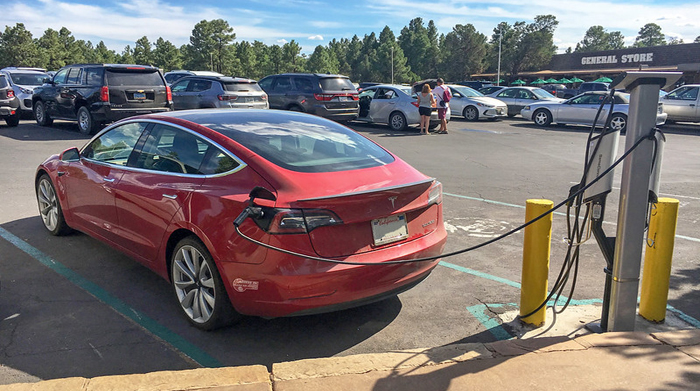EV Infrastructure Introduces New Risk into the Grid

Image courtesy of Grand Canyon National Park under Attribution 2.0 Generic License, resized to 700 x 391 pixels.
As you probably know, there is a big push happening right now to build out a more robust electric vehicle or EV infrastructure. The thought is that this will help mitigate the effects of climate change because it will reduce the amount of gasoline consumed, as well as the volume of vehicle emissions generated, on an annual basis. Unfortunately, despite the potential benefits, this movement also comes with an immense amount of risk.
The Downsides of a Widespread Expansion of EV Infrastructure
As you may have guessed, the risk mainly boils down to cybersecurity. You see, if a hacker targets an electric vehicle, any malicious code could find its way into the grid whenever the EV is plugged in for recharging. In fact, a bad actor could do a number of malicious things to an EV or the grid, including but not limited to:
- Locking the driver out of his or her vehicle
- Stealing PIN, credit card, or other payment information
- Purposefully overcharging the battery to damage the EV
- Purposefully damaging a charging station
- Spreading malicious code into back-office utilities
- Overloading community power systems, causing outages
- Disrupting emergency services by essentially decommissioning the agencies’ EVs
Simply put, any cyberattack on an EV can compromise the entire connected infrastructure. It’s a double whammy type of risk, because the risk encompasses two major categories of so-called critical infrastructure – transportation and utilities.
For this reason, experts recommend that EV infrastructure be developed and “designed as a system.” Unfortunately, as of now, most components of EV infrastructure are developed with limited knowledge of how each one interacts with the rest of the system – i.e., the downstream and upstream impacts.
The best solution for this quandary is for stakeholders to collaborate to develop a systemwide set of cybersecurity standards, ultimately to be incorporated into the National Institute of Standards and Technology. Until that happens, you can add EV infrastructure hacks to your list of emergency planning scenarios.



